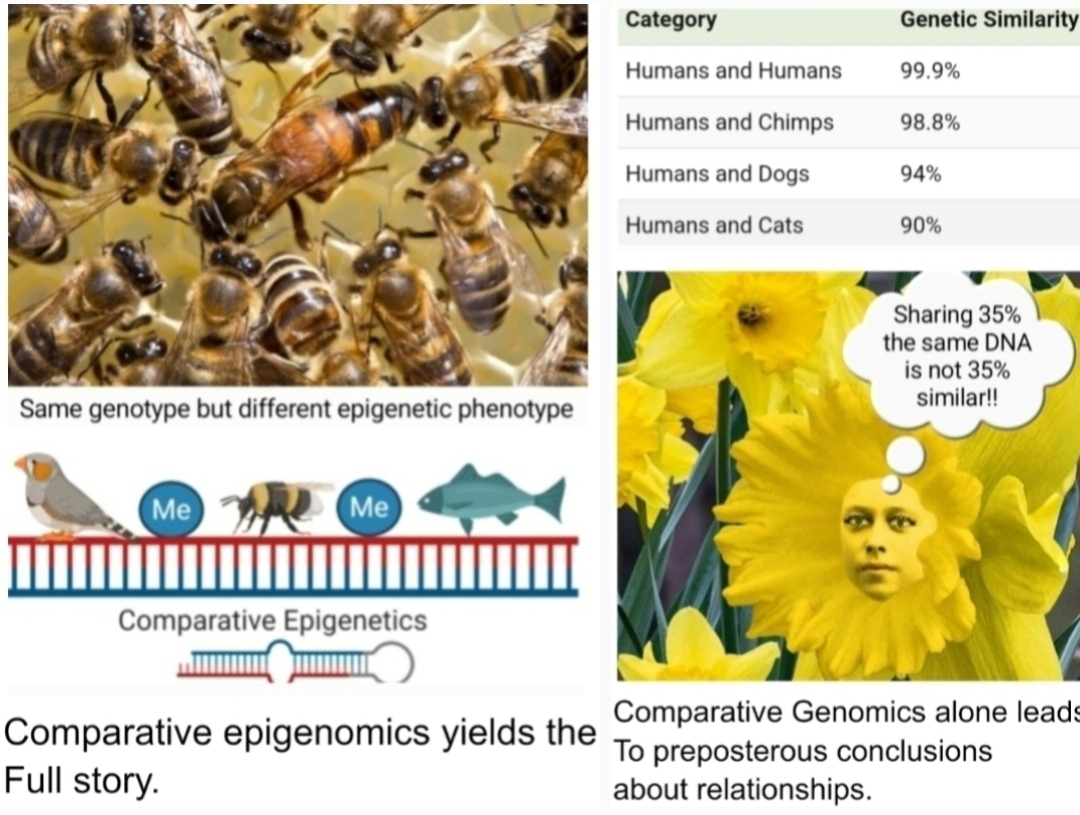For over 40 years, Phylogenetic Comparative Genomics solely focused on protein-coding exons
For over 40 years comparative genetics solely focused on protein-coding exons. This presented an incomplete picture of the intricate mechanisms underlying genetic diversity and evolution. By overlooking noncoding DNA, horizontal gene transfer (HGT), and epigenetic modifications, we were missing key players in the evolutionary symphony.
Noncoding DNA, comprising a vast portion of the genome, harbors a wealth of regulatory elements that orchestrate gene expression. Promoters, enhancers, and silencers, encoded within this "noncoding landscape," act as conductors, guiding the timing, intensity, and tissue-specific expression of genes. These regulatory elements, often residing far from the genes they control, form complex networks of interactions that can be altered by mutations, translocations, and other genomic rearrangements. Such alterations can have profound effects on gene expression patterns and phenotypic outcomes, contributing to the evolution of novel traits and adaptations.
Horizontal gene transfer (HGT), the movement of genetic material between unrelated organisms, has emerged as a significant force in shaping the genetic makeup of diverse lineages. This process, prevalent in bacteria, archaea and eukaryotes allows for the rapid acquisition of novel genes and functions, enabling adaptation to changing environments and ecological niches. HGT has played a role in the evolution of eukaryotes, with genes involved in metabolism, immunity, and other essential processes being acquired from bacteria and other sources. By ignoring HGT, we neglect a major driver of genetic innovation and diversity, particularly in microbial communities.
Epigenetics, the study of heritable changes in gene expression that occur without alterations to the DNA sequence, adds another layer of complexity to the genetic landscape.
Epigenetic modifications, such as DNA methylation and histone acetylation, can profoundly influence gene activity and phenotypic outcomes. They do not cause randon mutations as with neo-Darwinism. These modifications, often influenced by environmental factors, can be passed on to offspring, leading to transgenerational effects. Epigenetic mechanisms play a crucial role in development, differentiation, and response to environmental stimuli, contributing to phenotypic plasticity and adaptation.
A comprehensive understanding of genetic evolution necessitates a multi-dimensional approach that integrates the study of exons with the exploration of noncoding DNA, HGT, and epigenetics. Each of these elements plays a distinct yet interconnected role in shaping the genomic landscape and driving the evolution of life's remarkable diversity. By embracing a holistic perspective, we can unveil the intricate interplay of genetic and epigenetic factors that underlie the complexity of biological systems.





Comments
Post a Comment